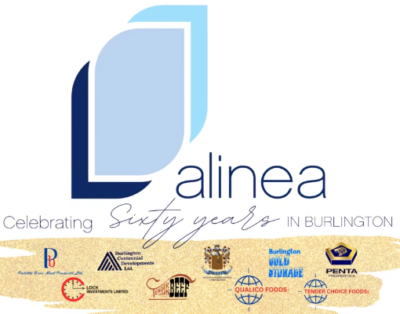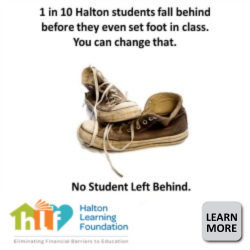 By Staff By Staff
July 30th, 2020
BURLINGTON, ON
The Halton District School Board has received notice from the Ministry of Education of final funding approval for a new secondary school in Oakville, a new elementary school in Milton and a child care centre renovation at Frontenac Public School in Burlington.
The renovation at Frontenac Public School in Burlington will create a two-room child care centre. Funding will also provide for regularly planned renewal work at the school to be completed.
Renovations to the child care centre at Frontenac Public School will begin immediately
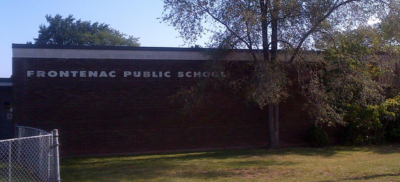 Frontenac Public School – Built in 1967. The provincial government will provide the following funding for these projects:
• $33,640,009 for the new Oakville secondary school (Oakville NE #1 hs)
• $19,183,165 for the new Milton elementary school (Milton SW #12 ps)
• $2,367,026 for the child care centre renovation and renewal work at Frontenac Public School
On behalf of HDSB students, the Board appreciates the role of the Ministry of Education and the Ontario government to improve the learning experience for students.
“We are grateful for the support of the Ontario government and the Ministry of Education for funding these three important projects. These new schools will help accommodate the tremendous housing growth occurring in Milton and Oakville,” says Stuart Miller, Director of Education for the Halton District School Board. “The renovation at Frontenac Public School will allow us to increase the number of child care spaces in our community and serve more families.”
Construction for the new schools in Oakville and Milton is expected to begin in Spring 2021.
The new secondary school in northeast Oakville (Oakville NE #1 hs), which will be located at Dundas St W and Neyagawa Blvd, will provide an innovative and supportive learning environment for 1,200 students.
Once complete, the new elementary school in southwest Milton (Milton SW #12 ps), which will be located on Kennedy Circle West, close to Louis St. Laurent Ave and Thompson Rd S, will accommodate 770 students and include five child care rooms.

 By Jim Young By Jim Young
July 29th, 2020
BURLINGTON, ON
The Ontario government will soon roll out its back to school plans for September amid ever changing case numbers, a phase three re-opening; the results of which no-one can predict and an atmosphere of apprehension among parents, teachers and businesses who would all have liked a plan in place by now to allow more time to prepare for the work required to accommodate all sides of this very tricky equation.
Some of the troubling questions that plan must address will include the following:
Must teachers self-quarantine for 14 days before school opens? If not what is the risk of a recently asymptomatic teacher working in a classroom? The same applies to students. Should they self-quarantine before going back? The risk of asymptomatic transmission is a two way street.
If a high school teacher has 5 classes each day of 12 socially distanced students, 60 in total for any given day, and the teacher tests positive for the virus, do all those students now need to be tested? How will parents be notified? Will testing be done at school or do parents have to take students to an offsite facility? Do the other family members of these students now have to be tested? Do they all now have to self- quarantine while teacher is treated? What is the protocol for allowing teachers and students to return?
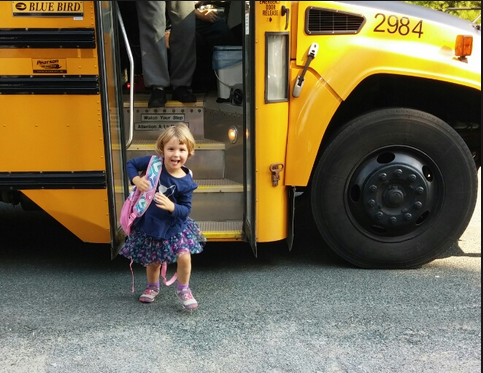 Are we likely to see scenes like this in the near future? A student just busting to get into a classroom. What happens if someone living in the same home as the teacher gets sick? Must the teacher now take 14 days off to self-quarantine? If teachers have to self-quarantine for 14 days, will they be paid sick leave? Where will boards find supply teachers when a regular teacher is quarantined? Knowing that these kids have been exposed and maybe spreading asymptomatically, will supply teachers want to assume that risk?
Supply teachers teach in multiple schools across a board, if they are called to teach a class in an unwittingly infected school, then move on to another school, how many schools and children need to quarantine at that point? Will a contact tracing/testing system be in place? If so how will it cope with so many variables in a timely manner? Supply teachers only get paid when called in, if they get sick on the job will they be paid for absences?
If a student in a school shows symptoms, where and how do they isolate at school? Who makes the Covid/non-Covid call? Who supervises that isolation? Do the whole class and teacher now need to quarantine? What about contacts in the playground, hallways, common areas, washrooms and drinking fountains? Who monitors hallways and bathroom breaks? How will increased stress levels among teachers and students affect the quality of the teaching/learning we are returning them to?
How should teachers handle everyday proximity issues like checking and marking student work? How do students share common resources and equipment? These issues are particularly fraught for educational assistants with special need students who may not understand physical distancing or be unable to function at a safe distance, who may need feeding, diapering or hand over hand guidance, who may spit or drool.
Even before kids get to school, will school bus pick-up points be monitored and safely distanced? Will school buses be sanitized after every journey? Who will enforce safe distancing on school buses, while the driver concentrates on the road and traffic? Currently, a low wage job, local schoolboards and school bus companies have difficulty recruiting drivers in a pre-Covid world. Who will drive the bus, for minimum wage and limited hours in the present high risk environment?
Who will provide PPE and sanitizing resources? Older teachers close to retirement or with compromised immune systems are most vulnerable and almost certainly at higher risk. Will teachers and educational assistants retain their WSIB right to refuse unsafe work?
Are we prepared for the unthinkable? How will students, staff, parents or the entire school system cope when a teacher or student dies from Covid19? A horrifying thought; but this virus does kill. Will provisions for this be in the plan?
At a time when school boards and politicians meet virtually, reducing their risk while discussing the safe return to classrooms; with all the face to face, physical contact and respiratory risk that entails; Dare I suggest it will not be safe for children to go back to classrooms until school boards lead by example; walk the walk and hold the meetings and votes, on returning to school, face to face in those same classrooms.
This piece was written with advice from local schoolteachers, educational assistants and various Canadian and US online educational forums.
Jim Young is an Aldershot resident who writes frequently for the Gazette and has in the past delegated at City Hall just as frequently.

 By Pepper Parr By Pepper Parr
July 29th, 2020
BURLINGTON, ON
Every household in the city that has children attending a school are faced with the questions:
When schools re-open will our children be in the classroom?
It is a very personal family decision – that is compounded by the realities of the modern family where Mom and Dad both work.
Once the parents are back at their desks – the kids have to be in school.
While the Premier of the province is doing his best to keep the public fully informed he is also being very cautious and quite loud when he learns of some of the really stupid social behaviour.
He wants students back in schools but he also wants to be certain that he gets it right the first time.
The public is wary of a government that wants things opened up for the sake of the economy – the parents want to be assured that there children will be safe.
The Hospital for Sick Children released a report today that represents the views of the medical community.
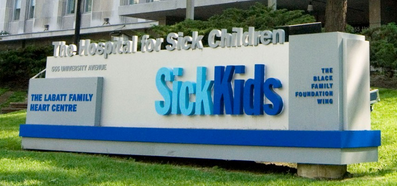 With a world class reputation – parents can take some comfort in their views on when students can return to school and what the conditions should be. SickKids has released new proposed guidelines for reopening schools in Ontario come September, including recommendations like staggered lunch times, no large assemblies, and mandatory masks for older students.
It suggests various health and safety protocols for schools that take a student’s age and developmental considerations into account.
The group says it is recommending the use of masks for high school students, with consideration for middle school students, whenever physical distancing can’t be maintained. Around 61 per cent of the authors agreed masks shouldn’t be required for elementary school kids.
“[Mask wearing] probably will diminish the infectivity of some individuals with COVID, however there are also a number of potential harms,” said Dr. Jeffrey Pernica of McMaster Children’s Hospital, saying that masks could distract and interfere with learning, especially for those with articulation problems, neurological issues, or kids who are learning a second language.
He also said that masks would have to be worn correctly in order to be effective, adding that it could be “impractical” for teachers to enforce.
The doctors aren’t recommending that elementary school children wear masks, saying that they could be a distraction and interfere with learning.
Most of the doctors also agreed that if community transmission is low, masking should not be mandatory for students returning to class.
 This is the number of students who will fill a classroom under COVIID19 conditions. Will they wear masks? “The lower the level of COVID in the community … the less benefit there is with masking — but the harms remain the same,” Pernica said. “This is why our recommendations are what they are right now.” Pernica also added that if the levels change, so will the recommendations.
Dr. Sean Ari Bitnun, a physician at SickKids, further emphasized that one single measure wasn’t going to mitigate things — success relies on the package.
“If we’re not focusing on any of the other recommendations, we are bound for disaster,” he said. “It really is the bundle effect that is going to create a safe environment for teachers and students.”
When it comes to physical distancing, the document says its role “should be discussed with students of all ages,” but added it would not be practical to enforce for kids in elementary school, especially during play times.
Instead, the report says “cohorting” — where kids would avoid mixing with other classes and grades — could be used as a strategy.
“Two metres is optimal, but the transmission at one metre is not significantly different,” said Dr. Charles Hui of CHEO.
Other recommendations include:
Implementing strict screening for students and employees who are symptomatic or have been exposed to the virus.
Teaching kids how to clean their hands properly with developmentally and age-appropriate material.
Arranging classroom furniture to leave space between students.
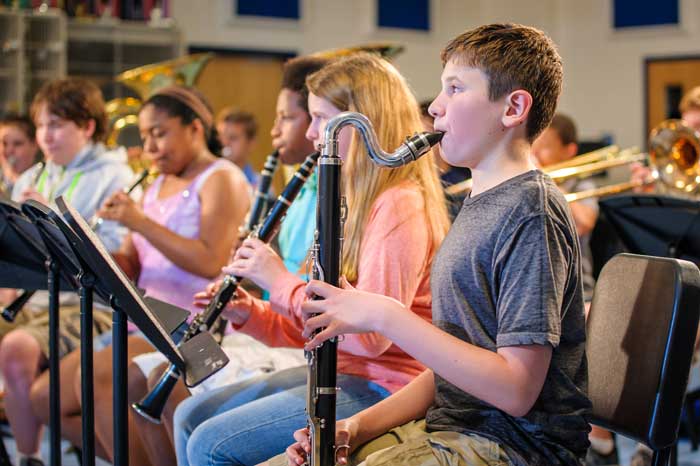 The wind instruments won’t get taken out of their cases this school year. Having smaller class sizes. Cancelling choir practices, performances, and band because of the high risk of transmission from wind instruments.
Continuing sports and physical education classes, but cleaning sports equipment and delaying team and close contact sports.
Implementing a regular cleaning schedule.
The doctors said that it would be up to each school to figure out how to implement changes when it came to aspects like running school libraries or preventing masses of students from rushing out into the hallways at the end of the school day.
Dr. Bitnun also called for local public health units to closely collaborate with schools, saying that “there will undoubtedly be positive cases with the children and for teachers.”
‘Putting out fires as they come up’
The document stresses that opening schools safely — and keeping them open — will be directly impacted by how the virus is spreading in the community.
The recommendations reflect a mark of less than 200 new confirmed cases a day, and experts say that “may evolve” as the epidemiology of COVID-19 changes and new evidence emerges.
The doctors said they haven’t identified a specific level of community spread that, if breached, would means schools would have to close.
“A specific number in isolation doesn’t really have value,” said Dr. Bitnun. “My view, and I think this is shared by the others, is maybe the most important thing is to have a robust system of testing and contact tracing … in other words, we should focus on, to paraphrase, putting out fires as they come up rather than shutting down everything based on a specific number.”
Staying home could impact already vulnerable students
The experts quoted in the document continue to push for full-time instruction, saying that remote learning would be “insufficient to meet the needs” of youth.
“Thinking about developmental impact and mental health impact has to be in the same equation as the potential harm of COVID,” said Dr. Sloan Freeman, lead pediatrician at St. Michael’s Hospital.
There are risks to Ontario schools reopening full-time but ways to mitigate them, experts say
Going back to part time, they said, would affect working parents and caregivers, and mean bringing more people into the loop, like babysitters or grandparents.
Not going back, doctors say, could impact already vulnerable students the most.
 Difficult children will find it hardest to cope with the changes. “Medically complex children or children with severe underlying medical or behavioural illness, I think those families are disproportionately affected by what is going on in terms of isolation and trying to manage at home,” said Dr. Jeremy Friedman, a pediatrician at SickKids. “I think that those families, more than any others probably, will not be able to withstand the sort of time period we’re talking about for [when] this pandemic has moved into a more stable phase.”
“The sad irony is that I think that the children who are perhaps the most fragile and most at risk, those children, those families are the ones that probably need to have the normality and the routine,” he said.

 By Pepper Parr By Pepper Parr
July 29, 2020
BURLINGTON, ON
Aug 10th, when we know what direction the Ministry has given us
How many people are missing those Back to School Sales flyers that would normally be stuffed inside whatever gets dropped off at your house?
Most parents are wondering just when (some ask if) school is going to start. September 7th is the scheduled resumption of classes but at this point no one at any of the school boards knows what the province is going to dictate.
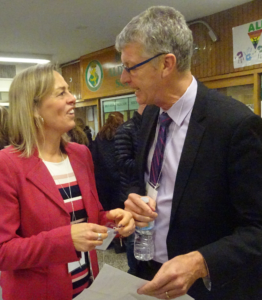 HDSB Superintendent Terri Blackwell speaking with Director of Education Stuart Miller School boards from across the province have been meeting with Ministry of Education officials setting out how they would teach under one of the three scenarios the province outlines:
All teaching done remotely
All teaching done in schools with classes limited to 15 students
An Alternative approach that was a combination of the other two scenarios.
The Halton District School Board (HDSB) has prepared a very detailed schema for the elementary and secondary students. They have not released the details because they don’t yet know what the province is going to direct them to deliver.
HDSB Director of Education Stuart Miller didn’t want to confuse parents by sending out information that may prove not to be applicable.
What the School Board will be doing is sending a questionnaire to parents asking if they plan to send their children back to school when the province clears the way. Miller and his staff want to know if the parents will send their children to a school or if they want them to be taught remotely.
We know now that there will not be gym classes, French classes will be limited and that there will not be any extra-curricular or co-curricular activities.
The bigger question for many is: How long will school have to operate under these restrictions? All of the 20-21 academic year?
An announcement of some sort was expected by the ends of this week – the Gazette has since learned that an announcement will be made on August 10th.

 By Pepper Parr By Pepper Parr
July 27th, 2020
BURLINGTON, ON
The Ontario Liberals have found their tongues and come out with a fully-costed plan to get students back into classrooms safely and in classrooms no larger than 15 students.
Steven Del Duca, leader of the Liberal Party in Ontario who does not yet have a seat in the Legislature announced a Schools Action Plan calls for 1,300 new classroom locations, the hiring of 890 additional educators and 340 additional caretakers in Halton. These measures enable safe, physically-distanced learning, which is the first step in getting parents back to work and reopening the economy.
“Students and their parents in Halton have been waiting for far too long to hear what will happen in September,” said Del Duca. “Living with this uncertainty has caused unnecessary anxiety during what has already been a stressful time. Getting our students back to school safely is what kids critically need for their own development and it’s the only way their Moms and Dads can have peace of mind to return to work.
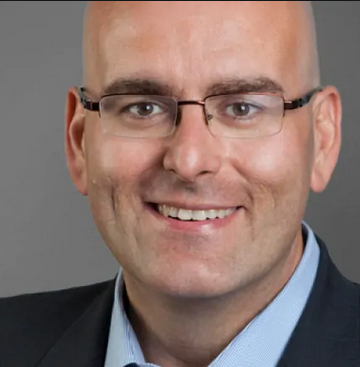 Steven Del Duca, a Cabinet Minister in the Wynne government that was defeated by Doug Ford, was elected leader of the Ontario Liberal Party recently. He does not yet have a seat in the provincial Legislature.
“Since the government hasn’t unveiled a plan for the fall, I did,” said Steven Del Duca.
“Doug Ford should have made this a priority months ago by meaningfully consulting with school boards, teachers, education workers, principals and parents. He has not.”
“We need students in classrooms and we know that while distance learning obviously needs vast improvement as a complement to future learning, the high quality and safe in-class experience needs to be front and centre in our plans for this Fall. It is the responsibility of the Premier to develop a plan to achieve this safely, including sufficient training and support.”
“Reopening the economy without full day school in September puts families in impossible situations. It forces parents to choose between their children’s education and their work. We have heard too many stories of parents – working mothers in particular – who have had to give up their careers because Doug Ford has yet to share a plan and won’t help them with childcare.”
“Ford’s priorities are beer, bars and booze — it’s time to deliver on a better, stronger and safer public education for our kids.”
“We need to ensure schools are a safe place to learn and a safe place to work. That’s why my plan dramatically expands the number of classrooms and educators.”
Del Duca’s Students in Schools Action Plan will cost $3.2 billion* and will fund:
– 15,000 More Elementary Teachers to reduce class size to 15 – $1.30 billion
– 10,000 More Caretakers to keep elementary and secondary schools clean – $500 million
– 14,000 New Classrooms in Community Centres, Campuses, Arenas, etc. – $200 million
– 2,000 More Secondary Teachers – $170 million
– School Transportation (Cleaning, Retrofits, Staggered Starts) – $80 million
– Sufficient Cleaning/Hygiene Supplies and Equipment – $120 million
– 1,500 Special Education Professionals to Help Close Learning Gaps $120 million
– New equipment for students and educators (approx. 400,000 new devices) – $200 million
– Reverse PC Cuts to School Mental Health and hire 1,000 more Mental Health Professionals to support staff and students – $75 million
– Provincial Leadership in Centrally Procuring and Purchasing Personal Protective Equipment for Students and Staff (e.g., face shields, masks, gloves) – $110 million
– Support Parental Engagement and Communication – $25 million
– Public Health Coordination of Screening, Testing and Contact Tracing N/A – Contingency (10%) – $290 million
*This is a one-time funding plan for the 2020-21 school year, after which, a vaccine may likely be available. Regardless, the government should begin planning for 2021-22 as early as possible.
In Halton (HDSB & HCDSB) this means:
– 1,300 new classroom locations in community centres, campuses, arenas, etc.
– 890 additional educators to reduce class sizes
– 340 additional caretakers to keep schools and school buses clean
“The choice is between students in schools or the chaos that Doug Ford’s unclear approach will create. We need to make it safe for students in Halton to learn – it is the only way they will thrive, and it will enable their parents to go back to work,” concluded Del Duca.
Do we have a political party deciding that now is a good time to play some politics?
The Halton District School Board is meeting with the Ministry of Education virtually on Tuesday and will have a program in place and ready to be announced early in August.

 By Pepper Parr By Pepper Parr
July 24th, 2020
BURLINGTON, ON
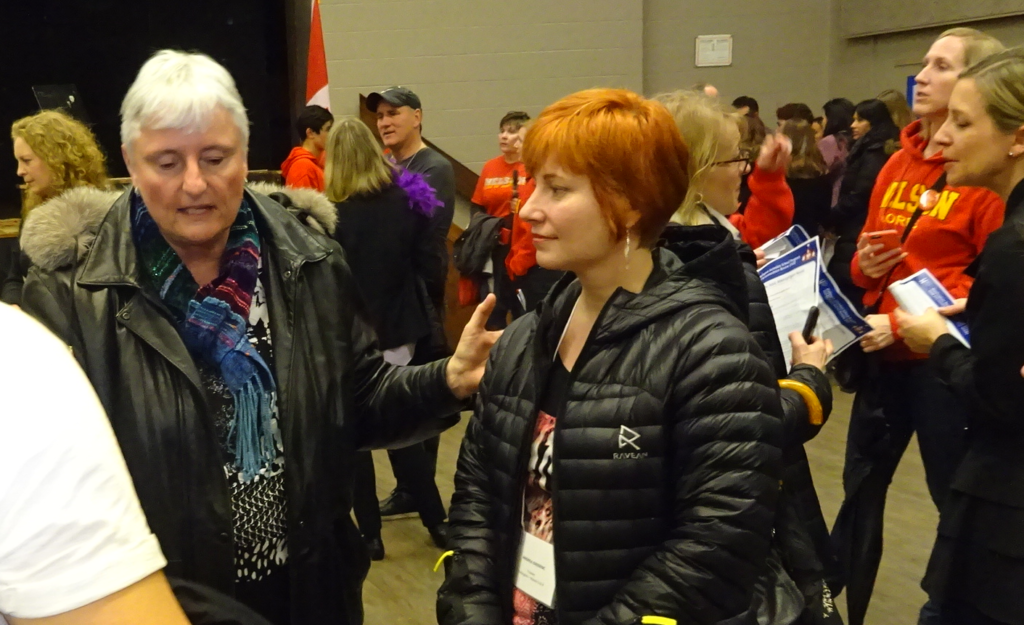 Trustee Grebenc with trustee Grey at a public meeting. In an interview with Halton District School Board Chair Andrea Grebenc on the issue of masks for teachers and students while they are in schools Ms Grebenc said: “The Minister and Public Health officials have not decided about whether students require masks. I understand that decision may be coming next week.
“To supply PPE to staff it looks like it will cost about $20M over the year at the pricing we can get. We are asking the Province to help source PPE to get better pricing.
“We have $4M set aside for COVID contingency and as a result, we had to pass another deficit (but compliant) budget this year with a solid plan from our staff to return to the black.
“At this point, the Minister has provided a similar budget funding as previous years with an expansion of funds to help with the new math curriculum and some mental health initiatives. The increase in our dollar amount has more to do with increase in enrollment in Milton and Oakville, the decrease of the class size average(resulting in hiring teachers) and some money to support some positions won at the provincial level through education worker and teacher union negotiations.
 Andrea Grebenc during a a first term interview . “The Minister has added only $56M to the provincial budget for COVID – there are 72 boards – that is $750K each if divided equally (which I hope it’s not – TDSB shouldn’t get the same amount as a small board).
“This is to help with cleaning staff and supplies, PPE and transportation. If HDSB PPE costs $2M a month for staff, you can see how this amount of money from the Minister is completely unrealistic and could not support masking students as well.
We have over 66,000 students. There would have to see a massive influx of cash from the Province to cover that cost.
“If the Minister or public health state that masks were mandatory in schools, as a parent with kids in the system, I would then see masks like I see binders for courses or running shoes for gym class – something I would buy (or make) for my child so they are prepared for school.
“Also, I would want to make sure a mask fits well on my child, is comfortable and won’t get mixed up with other kids’ masks. You can get reusable masks inexpensively at a number of places ($3 each at Old Navy for example) and for Burlington residents, the Mayor and Councillor Stolte, in conjunction with the fire department, have set up a mask donation centre to help those that are having a hard time affording masks. Economically challenged families in our system could also contact the Halton Learning Foundation to help get a reusable mask so that students could attend school (if that is the law).”
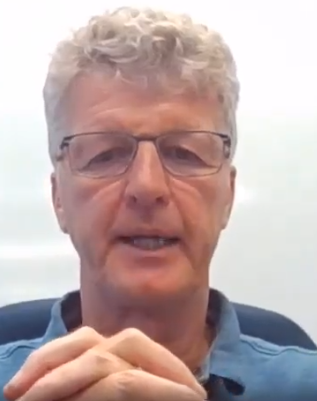 Director of Education Stuart Miller during a virtual school board meeting. Director of Education Stuart Miller points out the principals in ever Halton school (there are 105 of them) know their students and is aware of households where things are tough;” a way is always found to ensure that students get what they need.”
Director Miller and several of his key staff will be doing a virtual interview with Ministry of Education officials on Tuesday at which time they expect to learn what the province is looking for in the way of a safe return to school program.
The province set out several scenarios that HDSB has responded to. “We have to be able to offer a program that meets the provincial mandate and at the same time be flexible enough to shift the way classes are delivered in the event that there is a hot spot in a school or a larger community.
“We will be working with the public health unit on a daily basis to monitor the students – watching for the tell-tale sign of a student who is not well.
“It is going to be a stressful time but we have done our homework and we believe we are prepared for students who will return to classes in one form or another on the 7th of June.
“We haven’t given the parents all that much in the way of information” said Miller, “because we don’t have decisions from the province.”
“Once we know what the program is going to be – we will communicate at every level with the parents.”

 By Staff By Staff
July 23rd, 2020
BURLINGTON, ON
A batch of mosquitoes trapped this week in Oakville has tested positive for West Nile virus (WNV). This is the first batch of WNV positive mosquitoes for Halton this year.
The Public Health Unit is swamped with COVID19 matters – then we are reminded that West Nile Virus has returned.
 “Halton is committed to reducing West Nile virus in our communities through education and preventative programs such as larviciding,” said Dr. Hamidah Meghani, Halton Region Medical Officer of Health. “Until the hard frosts of fall set in, Halton residents should continue to protect themselves against mosquito bites and remove mosquito breeding sites.” “Halton is committed to reducing West Nile virus in our communities through education and preventative programs such as larviciding,” said Dr. Hamidah Meghani, Halton Region Medical Officer of Health. “Until the hard frosts of fall set in, Halton residents should continue to protect themselves against mosquito bites and remove mosquito breeding sites.”
Urban areas are more likely to have mosquitoes that carry WNV. The types of mosquitoes that transmit WNV to humans most commonly breed in urban areas such as bird baths, plant pots, old toys, tires and other locations that hold water.
Residents can take the following steps to protect themselves and their families from mosquitoes:
• Cover up. Wear light-coloured, long-sleeved shirts and pants with tightly-woven fabric.
• Avoid being outdoors from early evening to morning when mosquitoes are most active and likely to bite, as well as at any time in shady, wooded areas.
• Reduce mosquito breeding sites around your home by getting rid of all water-filled containers and objects, where possible. Change the water in bird baths at least once per week.
• Use an approved insect repellent, such as one containing DEET or Icaridin.

 By Staff By Staff
July 23rd, 2020
BURLINGTON, ON
Joseph Brant Museum offering Virtual Visits for Kids
 What is a virtual visit and why would you want to do one? What is a virtual visit and why would you want to do one?
The Joseph Brant Museum has a daily one hour Zoom session featuring live instruction by a Museum Educator who guides a series of creative, hands-on activities that relate to a weekly theme. Next week’s theme is the “Age of Exploration”.
Cost: $25/week. Programs are designed for children aged 8-12, parental supervision may be required for some activities. Register today and pick up the activity bag tomorrow at Joseph Brant Museum from 10:00 am to 3:30 pm.
Registration right HERE

 By Pepper Parr By Pepper Parr
July 23rd, 2020
BURLINGTON, ON
We are busy enough with the six feet thing; we’ve never washed our hands as often and there is a leeriness about going out for dinner and being inside the restaurant.
Can we invite friends of long standing over for dinner – perhaps sitting outside on the patio and cooking on the BBQ would be Ok.
Add to all that the concern with getting the kids back to school.
Are the schools going to open? What will the class schedule be and how am I going to find dare care if I need it.
 Parents are frustrated – they want information – but the school boards don’t have much in the way of information they can share. Parents are frustrated – they want information – but the school boards don’t have much in the way of information they can share.
The Halton District School Board met in a Special Session yesterday. In a four part series, this being Part 1, we will tell you what we have learned.
The Halton Board is to meet with the Ministry of Education on Tuesday of next week (they have a two hour time slot) to present to the Ministry how they have responded to the three scenarios the province set out.
They are Conventional, Remote and Adaptive – Conventional being kids in the school, in classrooms all day with fewer kids in each class; Remote being everything will be done on-line with close teacher involvement in what is being called synchronous learning – everyone learns the same thing at the same tome – on-line.
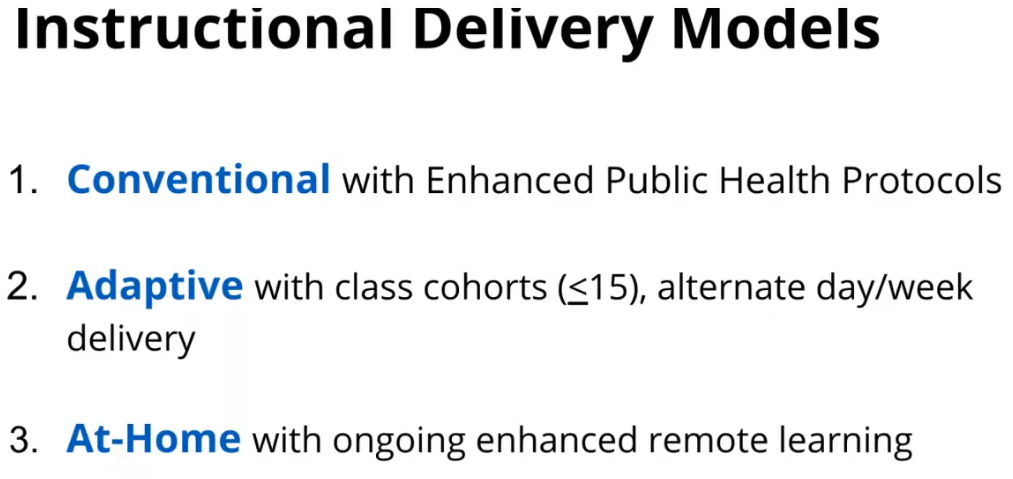 These are the models the Ministry set out. HDSB prefers the Adaptive and will be taking their ideas to the Ministry next week. The school boards now have all kinds of technology to manage teaching in this manner.
The Board at this point doesn’t have much to go on other than trying to read the tea leaves and figure out where the Ministry of Education is going to go.
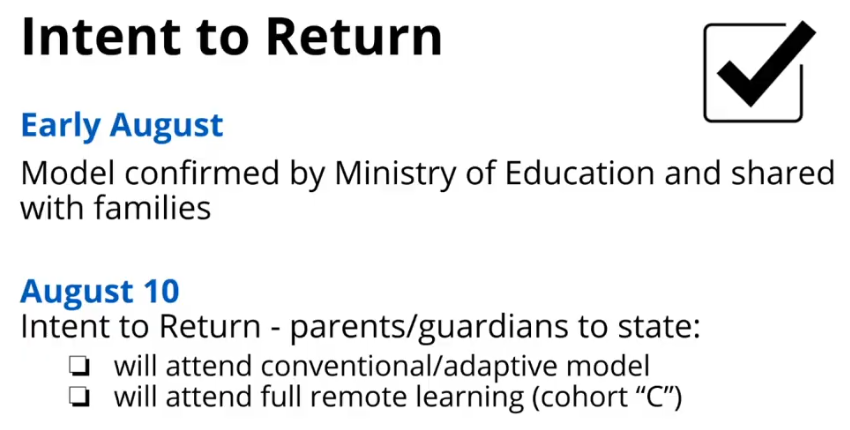 Once the Board knows which students are going to return – and then which form of instruction they prefer classes can be organized. The Halton Board’s understanding is that they will know very early in August which model the Ministry has approved. August 4th was a date mention – but nothing is carved in stone at this point.
With the model in hand the Board then needs to know what parents plan to do. Will their children return to school orwill they opt for remote learning.
If they plan to attend what is their preference – conventional classes or the adaptive model.
The Board also needs to know how many teachers are going to return to a classroom. Director of Education Stuart Miller did say that the Board has a solid list of occasional teachers they can call upon.
French is likely yo be limited.
Extra curricular and co-curricular are likely to be limited as well.
The Board and the trustees are critically aware of how important the “extras” are – they are concerned at this point in opening up classrooms and teaching students with mathematics and literacy being the focus.
 This is student life. How do you change it? This group represents what a classroom size is likely to be. Among the unknowns: are teachers going to have to wear PPE? Will students be expected to wear masks? What happens if an infection hot spot develops? The Board is in constant contact with the Medical Officer of Health.
Classroom cleaning has to be included in the schedules. The additional costs can only be guessed at today – but they are very real.
The most important thing to keep in mind is that at this point – most questions don’t have an answer – nothing can be decided upon until the Ministry approves the teaching model.
Until then, treat all this as background and begin thinking about what you are your family want to do.

 By Pepper Parr, Publisher By Pepper Parr, Publisher
July 21st, 2020
BURLINGTON, ON
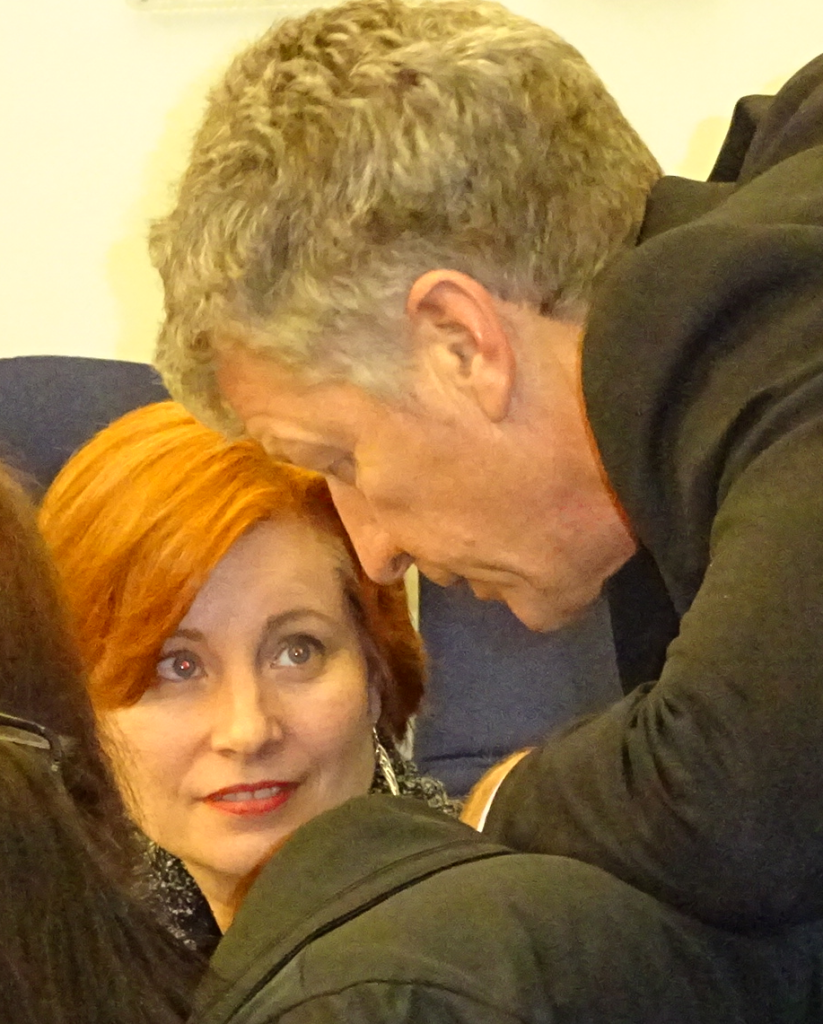 Andrea Grebenc in conversation with HDSB Director of Education Stuart Miller For those of you who subscribe to the Toronto Star – you saw the front page story on the remarks Halton District School Board trustee chair Andrea Grebenc made about what she believes is a serious problem facing parents when school reopens in September.
The Star did their piece this morning – the Gazette published that story last Thursday.
Local news from a local source.
Grebenc’s comment were well worth reading. LINK here.

 By Pepper Parr By Pepper Parr
July 20th, 2020
BURLINGTON, ON
Today the temporary bylaw requiring people to wear a face mask becomes effective.
The first thing to appreciate is that requiring you to wear a mask is serious.
Washing your hands frequently. Keeping that six foot social distance between you and people who are not part of your bubble and keeping away from locations where there are likely to be large numbers of people
Those are the essentials.
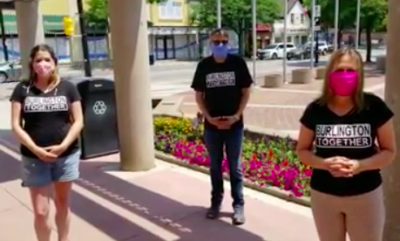 Late in June ward 4 Councillor Shawna Stole took it upon herself to convince her council colleagues to implement a face mask by law. Late in June ward 4 Councillor Shawna Stole took it upon herself to convince her council colleagues to implement a face mask by law.
After many, many hours at city council and many more the Regional council two bylaws were passed.
Both basically the same with Burlington setting aside $10,000 provide masks for people who could not afford them – the Regional Council took a pass on that one.
Last Friday Canadian Tire Fairview announced they were going to donate 14,000 masks – we assume the donation is to the city but have not been able to conform that.
Kwab Ako-Adjei, Director, Corporate Communications & Government Relations informed the Gazette that “we are working on a plan for free masks. We will announce that plan once it’s complete.
“In the meantime, we have let residents know that many bricks and mortar stores and online retailers sell masks, and many small businesses that sell them on social media platforms like Facebook.”
So – as of now there is a bylaw requiring you to wear a mask and no known program on enforcement and no known program to distribute masks to people who can’t afford one.
Why isn’t there a program in place?
The drive behind the need for the masks was ward 4 Councillor Stolte and the Mayor.
Not a word from either of them on how this is going to play out.
The bylaw puts the onus on the commercial sector.
The politicians appear to expect the commercial and retail sector to require you to wear a mask before you enter their premises. There are a lot of exemptions in the bylaws.
The pandemic has been tough enough on the commercial sector – the city now expects them to turn people away – really?
Walmart is sending emails to their customers telling them they have to wear a mask.
 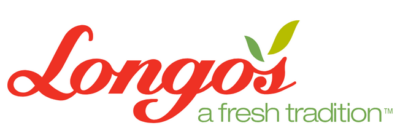 
Marylou’s is reported to be requiring people to wear a mask and selling you one for $2 if you don’t have one.
Longo’s took the position that you had to wear a mask if you wanted to shop in their supermarkets.
Let’s see how things work out at the end of the day.
Burlington is still at Stage Two of the Emergency regulations – many had expected to be at Stage 3 which would open up a lot of the commercial sector.
We will learn later today what the province decides to do – whatever they decide to do will be based on the number of new infections and that number is determined by you and me.

 By Pepper Parr By Pepper Parr
June 17th, 2020
BURLINGTON, ON
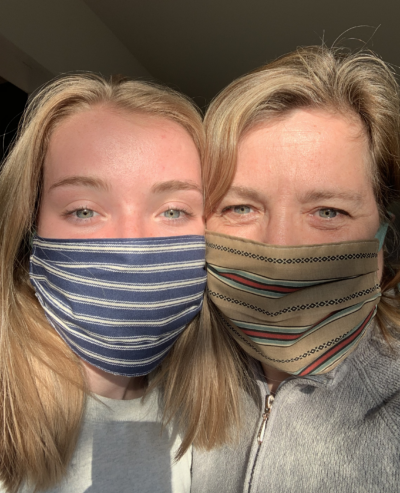 Ward 4 Councillor Shawna Stolte with her daughter modeling masks made by community members. Ward 4 Councillor Shawna Stolte advised people via her Facebook page that 14,000 face masks have been donated to the city and that she is looking into setting up distribution centres.
The city administration is working on a plan.
No work on what the other Councillors are doing.
The mask initiative was Stolte’s from the get go – she brought it to the Council table in June – she had to arm wrestle with the Mayor to keep control of her project and once the two women got that worked out off they went to Regional Council learned that the city for the most part was complying with the Regional Bylaw which goes into effect on Wednesday – the city’s goes into effect on Monday.
There is a lot of toing and froing going on here.
Related news stories:
Mayor and Councillor arm wrestle over who will lead the mask initiative.
Mayor comes around: masks play a large roll in limiting the spread of the infection

 By Pepper Parr By Pepper Parr
July 17th, 2020
BURLINGTON, ON
We now have two bylaws related to the wearing of face masks.
The city bylaw that was passed on Monday and the Regional by law that was passed yesterday.
If we got it right – Burlington’s bylaw complies with the Region so there is no conflict.
Burlington has some additional features in its bylaw – the spending of $10,000 on masks for people are not able to buy masks.
There are some basics in both bylaws that are essentially the same.
There are rules the public is being asked to follow. They are
WHERE THE BYLAW APPLIES INDOORS:
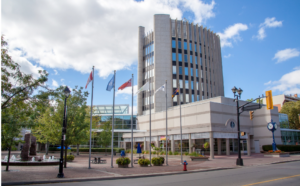 Mask needed to enter City Hall premises or any portion thereof which are used as a place of business for the sale or offering for sale of goods or services, and includes a mall or similar structure which contains multiple places of business;
churches, mosques, synagogues, temples, or other places of worship;
City indoor facilities open to the public, community centres including indoor recreational facilities and City Hall;
libraries, art galleries, performing arts centre, museums, aquariums, zoos and other similar facilities;
community service agencies providing services to the public;
banquet halls, convention centres, arenas, stadiums, and other event spaces;
premises utilized as an open house, presentation centre, or other facility for real estate purposes;
private transportation for hire, including taxis, limousines and rideshare services;
public transportation;
common areas of hotels, motels and other short-term rentals, such as lobbies, elevators, meeting rooms or other common use facilities; and
concert venues, theatres, cinemas, casinos, and other entertainment facilities.
WHERE IT DOESN’T APPLY:
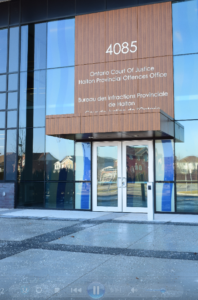 You do not need to wear a mask in the Court House. schools, post-secondary institutions, and child care facilities and indoor/outdoor day camps;
premises or any portion thereof (including City indoor facilities and community centres) used for City run recreational programs that require registration;
court facilities;
professional offices where clients receive purchased services (such as lawyer or accountant office) that are not open to members of the public except by appointment;
indoor areas of a building accessible to only employees;
hospitals, independent health facilities and offices of regulated health professionals.
EXEMPTIONS:
the person is under three years of age chronologically;
the person is under three years of age developmentally and they refuse to wear
a Mask or Face Covering and cannot be persuaded to do so by their caregiver;
the person has an underlying medical condition where wearing a Mask or Face Covering would inhibit the person’s ability to breathe in any way;
the person may experience a negative impact to their emotional well-being or mental health;
the person has a developmental disability which inhibits their ability to wear a mask or face covering;
the person has a disability whereby the wearing of a Mask or Face Covering would limit their ability to reasonably communicate with others or otherwise present a hardship for a person or persons assisting the individual;
the person is unable to place or remove a Mask or Face Covering without assistance; or,
employees and agents of the person responsible for the Establishment within an area designated for them and not for public access, or within or behind a physical barrier.
IMPORTANT THINGS TO NOTE:
There is NO REQUIREMENT of proof of exemptions
This is the point at which we learn how civilized a society we are. There is a 73 year old man who lived in Minden who was shot dead by police over the issue of his not wanting to wear a mask. He wasn’t shot because he wouldn’t wear a mask – he was shot dead because a situation got out of control.
You don’t to wear a mask and you don’t have to prove that you are exempt. What our political leadership is asking – is that you wear a face mask to keep the other people safe – when they wear their mask you too will be safer.
There are those out there will argue that there is no science behind the mask. That’s debatable – staying alive and safe is not something we want to debate – or do we?
Let us not fall into the disaster south of us.
We learned to wear seat belts.
We learned that we could no smoke inside public places.
We can learn to wear a face mask.

 By Andrea Grebenc By Andrea Grebenc
July 17th, 2020
BURLINGTON, ON
Chair of the Halton District School Board Andrea Grebenc moved a motion that was passed unanimously by the trustees – it was a barn burner of a speech.
Whereas Trustees are mandated by the Education Act to maintain focus on student achievement and well-being, to assist the board in delivering effective and appropriate education programs to its pupils and to bring concerns of parents, students and supporters of the board to the attention of the board;
And whereas the people of Halton enter into a social contract with the government to educate and act as childcare providers through paying taxes;
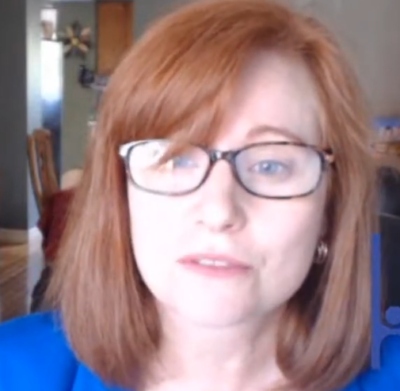 HDSB Chair Andrea Grebenc immediately after read out her strong motion. And whereas current Ministry funding for the hybrid/adaptive 15-student model does not allow for daily, in-person student attendance;
And whereas the hybrid model forces working parents to seek alternative childcare for younger children;
And whereas childcare for potentially 36,000 Halton District School Board(HDSB) Kindergarten to grade 6 students does not currently exist in Halton Region;
And whereas the hybrid model exposes younger students that require childcare during working hours to potentially unsafe and/or unsupervised environments;
And whereas unregulated, temporary childcare situations do not require inspection to show evidence of adherence to Public Health protocols that limit the spread of the coronavirus;
And whereas temporary childcare situations may mix students from various school classes, schools and boards, exponentially exposing the contained classroom “bubble” of students and staff and risking harder-to-trace-and-contain outbreaks in various classes, schools and across boards;
And whereas childcare costs money, potentially placing families into critical financial situations that may affect student achievement and well-being;
And whereas the hybrid model increases equity gaps, felt more profoundly by racialized, indigenous, and socioeconomically disadvantaged families, as well as students with special needs;
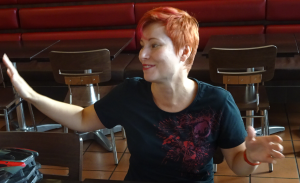 The Gazette always saw Andrea Grebenc as a woman with potential but timid – not prepared to make challenging statements. That changed on Wednesday And whereas the hybrid model may increase mental health issues and system stress by compressing the time to meet curriculum expectations by half;
And whereas internationally respected children’s hospitals have indicated that full-time attendance is what is best for children;
And whereas model constraints and funding does not allow for truly innovative educational solutions to come forward;
And whereas recent messaging from the provincial government regarding who will decide which of the three models will be implemented in September 2020 has been unclear;
Be it resolved that the Chair write a letter on behalf of the Board of Trustees, copying all Ontario Boards, OPSBA and local MPPs, indicating their concerns with the current part-time hybrid/adaptive model as outlined by the Ministry of Education, requesting the hybrid/adaptive model, under its current funding level, be withdrawn as an option for September 2020 for students in Kindergarten to grade six, requesting appropriate funding for the 15-student model as a daily attendance model or adjusting the model cohort parameters, and
Be it resolved that the Chair ask the Minister of Education for clarification about who the decision maker is for the September school year start up.
In comments made after the motion was tabled Grebenc said that “there are in excess of 36,000 elementary students within the Halton Board – where are those children going to be cared for should they have to distant learn.
 Grebenc conferring with HDSB Director of Education Stuart Miller “What will we get – quickly formed day care centre’s that are not regulated, not inspected with other children coming from who knows where. The bubbles that most families created to ensure their kids were safe would not be feasible.”
In the years we have watched Grebenc slowly develop a platform she was passionate about. wondering if we would every see one. It was on display at the school board on Wednesday.
Now Andrea Grebenc, try to move beyond a polite letter.

 By Pepper Parr By Pepper Parr
July 17th, 2020
BURLINGTON, ON
 Director of Education Stewart Miller The Halton District School Board trustees were given a glimpse of what Director of Education Stewart Miller is up against with the provincial government and what school will look like come September.
It was not a pretty picture.
There were three scenarios with several permutations within each scenario.
1: Continue with the distance learning that was in place from March through to June.
That experience wasn’t very satisfactory for the students, the parents and the teachers.
Few of the teachers had any experience with distance teaching; there was precious little available in the way of educational tools in the beginning.
Things did get better by the end of June but no one was looking forward to doing this again.
2: Return to full time classroom teaching using the social distancing rules which would have about 15 students in each classroom.
The problem there is – the Board doesn’t have the space needed – they would need double the space – which they don’t have. Renting outside space was a possible option but Miller doesn’t believe this will work.
Not enough space for the new classroom size model and not enough teachers. Miller wasn’t sure how many teachers he would need – something very close – maybe a bit above 1000 additional teachers – which may not exist. Every school board would be doing the same scramble for space and teachers.
3: The third option has been labelled “adaptive” learning which would get different treatment at the different levels – secondary being handled one way and elementary another.
Some of the ideas being floated are a situation where students attend for five days in a classroom and then five days at home where distance learning would come into play.
 Superintendent Terri Blackwell explaining what she thinks will happen with secondary students when school starts in September. Three Superintendents have been tasked with coming up with a proposal that they will have to take to the Ministry of Education and defend what they propose.
That meeting is scheduled for August, The Ministry will listen and then get back to the school board with directions.
Superintendent Terri Blackwell is doing the deep think for the secondary level while Scott Podebarac does that work for the elementary level.
Superintendent Julia Hunt Gibbons does the number crunching – trying to find a way to make the available space fit the number of students.
The three will be reporting back to the trustees on July 22nd with what they feel they should take to Queen’s Park.
Premier Doug Ford has been his usual adamant self when he says he wants every student in a classroom come September.
Making that happen is the challenge
The HDSB has not surveyed the parents – the three superintendents think it is a little too early for that. They don’t know what they are going to propose yet- little point in asking for an opinion without giving the parents the options.
There are additional concerns. Miller reported that 20% of the teachers are not certain that they want to return to working in a classroom.
The other concern is that some parents do not want to send their children to a classroom where they will mingle with other students that are not part of their bubble.
Add to that the problem with getting the kids to school. The number of students on a bus will be lower due to social distancing and parents fear that the virus would well be spread on the school bus with kids from a number of locations being stuck on a school bus.
The problems the school board administration faces are massive – and they aren’t going to get any easier.
The administration meet frequently with the many unions that are part of the educational system. Scott Podrebarac said the conversations are cordial.
 HDSB Trustee Chair Andrea Grebenc Chair of the trustees Andre Grebenc said that is not what she is hearing.
Hundreds of teachers have taken short courses that focus on teaching from a distance and working with students and parents who have to cope with a much different educational environment their children are now part of.
Lurking in the background behind all this is the threat of a second wave – that many of those in the science community suggest is inevitable.
If there is a second wave in the fall (120 to 150 days away) and we are back into a lock down – no one is saying public what the next step is –
Hopefully there are people in a room somewhere that are doing some hard thinking.

 By Pepper Parr By Pepper Parr
July 13th, 2020
BURLINGTON, ON
The Premier is expected to announce today that he will move to Stage 3 and open things up in some parts of the province. Halton is expected to be part of what gets opened wider – people may be able to return to work and the commercial world might be able to open up more of their space.
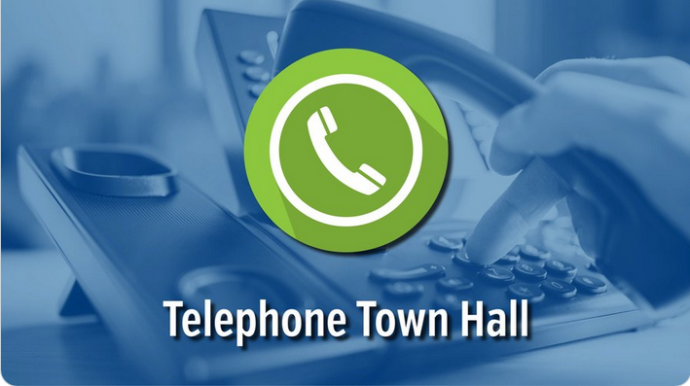 While returning to work is important to getting our economy working closer to its potential – the issue for many is – what happens in September when the kids are normally returning to school. While returning to work is important to getting our economy working closer to its potential – the issue for many is – what happens in September when the kids are normally returning to school.
Will the schools be open?
For how long each day?
What measures are being taken to ensure that those students are as safe as they can be?
There is a lot that is unknown about the COVID17 virus and the way it impacts younger people.
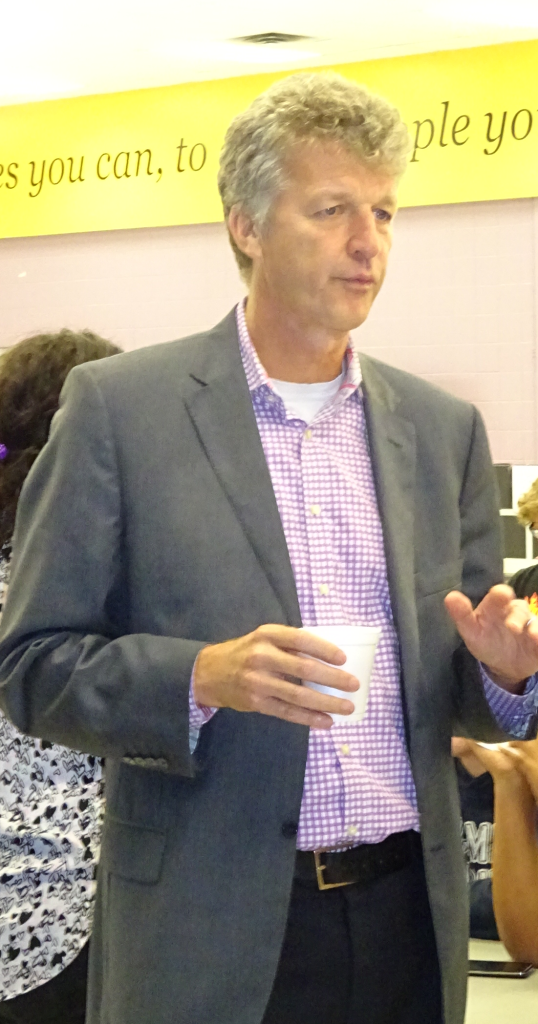 Halton District School Board Director of Education Stuart Miller. Thursday evening the Mayor is hold another of her Telephone Town Halls – this time the Halton District School Board Director of Education will be on the line.
This will be the first opportunity for parents to put questions to someone who can tell you as much as anyone about how schools will be operated come September.
How to Participate
Residents who would like to participate in the town hall can do so in the following ways:
1. Register in advance: Burlington residential phone numbers will be randomly selected to be part of the telephone town hall. Residents who would like to be added to the telephone call list can email getinvolved@burlington.ca by the end of the day on July 14.
Please note: if you registered for any of the previous town halls (held on March 26, April 14 or June 4), you are not required to register your phone number a second time. To remove a name from the call list, email getinvolved@burlington.ca by the end of the day on July 14.
2. Join by telephone: Anyone who does not receive a telephone invitation can call 1-800-410-5909 just before 6 p.m. on Thursday, July 16 to join the town hall. For those individuals calling in, please be advised more than one attempt may be required due to the high volume of traffic on the phone lines. If the first call does not connect, please hang up and dial the 1-800 number again.
Once the call begins, a moderator will provide participants with instructions for how to submit their questions to the leadership panel.

 By Joseph A Gaetan By Joseph A Gaetan
July 10th, 2020
BURLINGTON, ON
Christopher Columbus, Abraham Lincoln, Sir Winston Churchill, Sir John A MacDonald, Henry Dundas-1st Viscount, Peter Russell, Hector Louis Langevin, Joseph Brant and Samuel Hatt, all have something in common, all were honoured in some way, some with statues, some by having cities, museums, hospitals, streets, or schools named after them.
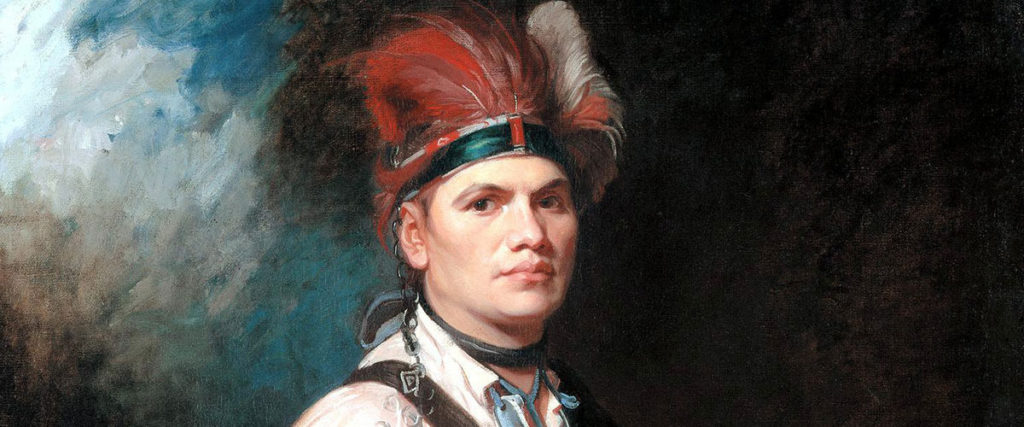 Joseph Brant portrait by George Romney What these people, all men, also have in common is their names are being removed from their statues, either defaced or torn down. The reason, something in their past is so abhorrent today that ancestors of the recipients of their misdeeds feel the mere presence of them and their acts in history are now toxic beyond repair or forgiveness. As decades and centuries passed, the memory of their names lived on, while their deeds – both good and bad – were mostly forgotten today and they are being erased from history.
Years ago, I visited the Arizona Memorial and had no idea what to expect. Today, I still consider it amongst the most moving experiences in my life and no words can do justice to the experience and deep feelings that arose while standing over the Arizona and the 1102 sailors and marines entombed beneath.
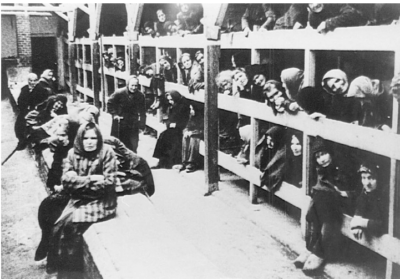 Women in the Auschwitz-Birkenau concentration camp The Auschwitz-Birkenau memorial also stands today as a reminder of the atrocities that occurred between 1940 and 1945. About 1.1 million innocent men, women and children were gassed and then cremated at Auschwitz-Birkenau. The death toll from Auschwitz alone includes 960,000 Jews (865,000 of whom were gassed on arrival), 74,000 non-Jewish Poles, 21,000 Roma, 15,000 Soviet prisoners of war, and up to 15,000 other Europeans. Hitlers “Final Solution” resulted in millions more being exterminated in his death camps, while many politicians across the world ignored what was happening.
According to the Canadian Encyclopedia, a local hero, Joseph Brant (Thayendanegea) was born in 1742, on the banks of the Ohio River. Brant was a Mohawk Indian chief who served as a spokesman for his people, as a Christian missionary, and a British military officer during the Seven Years’ War (1756-1763) and the American Revolution (1775-1783). He was an influential military captain and a powerful diplomat who encouraged Indigenous tribes to share his political loyalties. During the American Revolution, “Brant fought throughout the war with an Indigenous-Loyalist band”, he also, “worked to form the Western Confederacy, a united group of Haudenosaunee (Iroquois) and western Indigenous peoples, created to block American expansion westward”.
 Joseph Brant often wore colourful costume, especially when he was at the Royal Courts in England. From 1776 to his death in 1807, “Brant fought in vain with the British and Upper Canada governments for the rights of his people to obtain title to the lands of the Grand River Valley”. The African American Registry also claims “[the] slaves he captured during the American Revolution built the Brant House at Burlington Beach and a second home near Brantford. In all, Brant owned about forty African slaves”.
A 2009 Star article and a 2017 Spec article both identify Brant as a slave owner. In his article, Andrew Dreschel posed the question, “Is slave owner Joseph Brant next?” His article also asks, “why stop there if we’re reassessing the past by today’s ethical standards?”. Dreschel also queries whether other effigies are being torn down, “to help expunge the sins of the past”? According to Dreschel, “one can find a Joseph Brant statue in the city of Brantford, and a life sized one in Ottawa, part of the Valiants Memorial commemorating important Canadian military figures”.
Dreschel goes on to state, “Brant was not the only slave owner in early Upper Canada … Historian Alan Taylor estimates the colony had about 300 slaves at that time, mostly taken from rebel settlements during the American Revolution by Indians and loyalist Raiders”, adding, “we would certainly need to change the names of countless schools including Earl Kitchener Elementary School in West Hamilton named after [the] Imperial British general whose ruthlessness included using concentration camps during the Boer War in South Africa”.
 A rendering of the entrance to the Joseph Brant Hospital. Do we take the Brant off the building?
In addition to the above the City of Burlington is home to a street named Brant, the Joseph Brant Museum, and the Joseph Brant Hospital.
In an article entitled, “The life of Sophia Pooley and the Queen’s Bush Settlement”, Carly Holmstead, Kayla Hefford, and Jennifer Williams write, “At the age of five, Sophia and her sister were taken to Niagara Falls, where they were sold to Mohawk chieftain Joseph Brant”. After several years on the reserve, Brant sold Sophia to Samuel Hatt: “at twelve years old, I was sold by Brant to an Englishman in Ancaster, for one hundred dollars, – his name was Samuel Hatt, and I lived with him seven year”. To add insult to injury the article also states, “During the time Sophia was enslaved by Samuel Hatt, legislations had passed marking the end of slavery; unbeknownst to Sophia, she continued to live under the confines of slavery”.
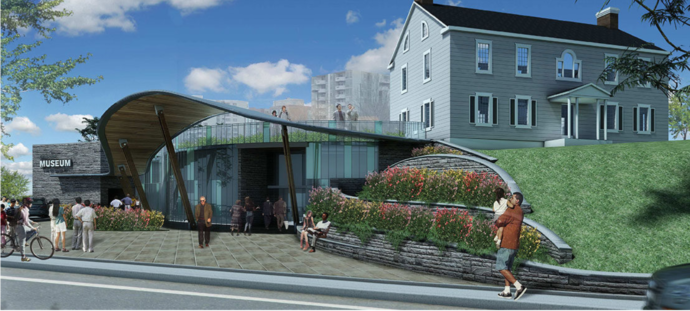 The name can’t be taken off the museum – or could it be called a home from a particular period of time? Sadly, slavery is alive, well and flourishing. According to the 2018 Global Slavery Index, approximately 45.8 million people worldwide are in some form of modern slavery. About 17 percent of the total number of people in modern slavery live where there is limited, if any, government action. These countries are characterised by government complicity (North Korea and Eritrea), low levels of political will (Iran), high levels of corruption (Equatorial Guinea), or widespread conflict (Libya). Few victims are being identified and there are even fewer prosecutions. According to the GSI, Canada is amongst the 12 G20 countries not taking action to stop the importation of goods and services that are at risk from being produced by forced labour.
 Golda Meir: she was elected Prime Minister of Israel in 1969. Golda Meir once said, “One cannot and must not try to erase the past merely because it does not fit the present”. The Arizona Memorial, Auschwitz and locally Joe Brant are still here to remind us and the world of the “day of infamy”, the “Holocaust”, and of a Mohawk Indian chief who served not only as a spokesman for his people but also as a Christian missionary and a British military officer during two major 18th century conflicts. Applying the “cancel culture” to Joe Brant’s honours would serve little while leaving the remnants of his legacy intact could serve as a model for recollection and reconciliation.
Joseph A Gaetan B.G.S, the author, was born during a time when Italo-Canadians were not treated kindly by some citizens and the government of Canada.

 By Staff By Staff
July 4th, 2020
BURLINGTON, ON
There is some absolutely fascinating graphic material on the novel coronavirus and the COVID-19 disease it causes on the Scientific American web site.
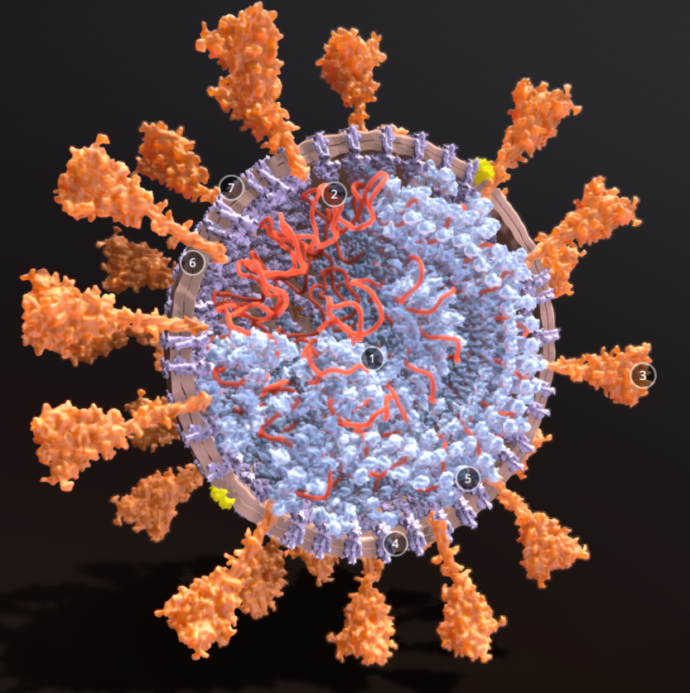 Those orange spikes are what penetrate our skin and replicate what you see on the screen. Science at its best If this is what e-learning is about – the high school students have an impressive educational opportunity ahead of them.
Very few science teachers could add much to this material. Most of them would be learning it for the first time.
While what we are experiencing is lock downs and rules that make life awkward and limited the world is seeing some of the most dramatic, fascinating and world changing advances in science.
This stuff makes the landing on the moon almost peanuts.
It is part of a race against a disease that we don’t yet fully understand that could mean the end of western civilization as we know it.
Economies are being destroyed as we watch a once great democracy stumble with no assurance that it is going to be able to get back up on its feet.
Scientists have generated an incredible amount of fine-grained knowledge in a surprisingly short time.
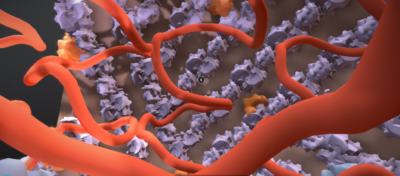 Parts of the graphic are in 3D In the graphics that follow, Scientific American presents detailed explanations, current as of mid-June, into how SARS-CoV-2 sneaks inside human cells, makes copies of itself and bursts out to infiltrate many more cells, widening infection.
We show how the immune system would normally attempt to neutralize virus particles and how CoV-2 can block that effort. We explain some of the virus’s surprising abilities, such as its capacity to proofread new virus copies as they are being made to prevent mutations that could destroy them.
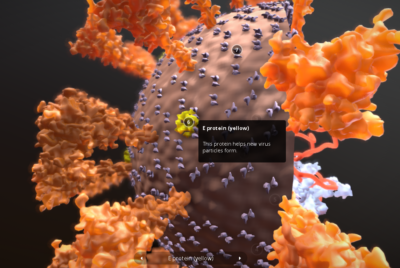 You can interact with the graphic – turning the image on its side or zooming in. There are numbers that you can click on for additional information. And we show how drugs and vaccines might still be able to overcome the intruders. As virologists learn more, we will update these graphics on our Web site (www.scientificamerican.com).
A SARS-CoV-2 virus particle wafting into a person’s nose or mouth is about 100 nanometers in diameter–visible only with an electron microscope. It is a near sphere of protein (cross section shown) inside a fatty membrane that protects a twisting strand of RNA–a molecule that holds the virus’s genetic code.
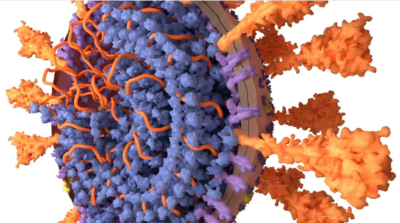 The graphics are brilliant – parts are shown in 3D giving you an amazing understanding of a disease that is hammering people around the world. More than 10 million infected. Millions have died. Proteins called “S” form spikes that extend from the surface and grab onto a human cell, hundreds of times larger, so the particle, or virion, can slip inside; the crown, or corona, appearance gives the virus its name. Structural proteins–N, M and E–move inside the cell, where they help new virions form.
A SARS-CoV-2 particle enters a person’s nose or mouth and floats in the airway until it brushes against a lung cell that has an ACE2 receptor on the surface. The virus binds to that cell, slips inside and uses the cell’s machinery to help make copies of itself. They break out, leaving the cell for dead, and penetrate other cells.
You can play with the interactive graphic – zoom in and see what the different parts of the virus are about.
Bookmark this link – and if there are science students in the house – make sure they are at least aware of this.
Distribute it widely.
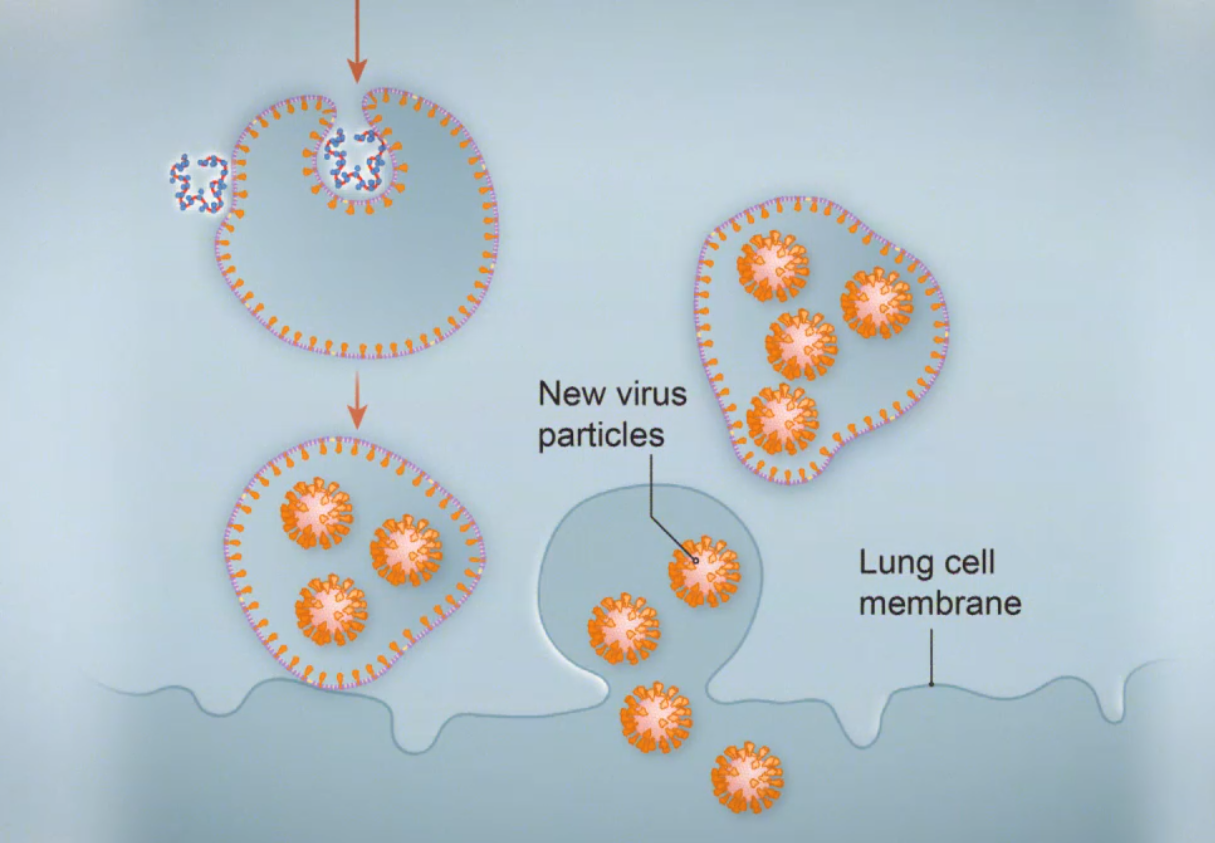 Graphic shows how the virus get into a lung. The material has a time line that sets out how long it takes the virus to penetrate (minutes) and how long it takes to replicates 10 hours. A link to the graphics is HERE

 By Pepper Parr By Pepper Parr
July 1st, 2020
BURLINGTON, ON
Canada Day is a good time to think about Citizenship.
Those of us born in Canada take it for granted and for the most part we are grateful that we live in this country.
For many – they choose to become Canadian citizens.
When that choice is made these people take part in a Citizenship Ceremony that is presided over by a Citizenship Court Judge.
The federal government often calls upon members of the Order of Canada to take on the task for what is a rather short ceremony that has one sentence that matters: Congratulations, you are now Canadian citizens.
Ron Foxcroft was made a member of the Order of Canada two years ago.
He presided over his first Citizenship Court in Hamilton recently.
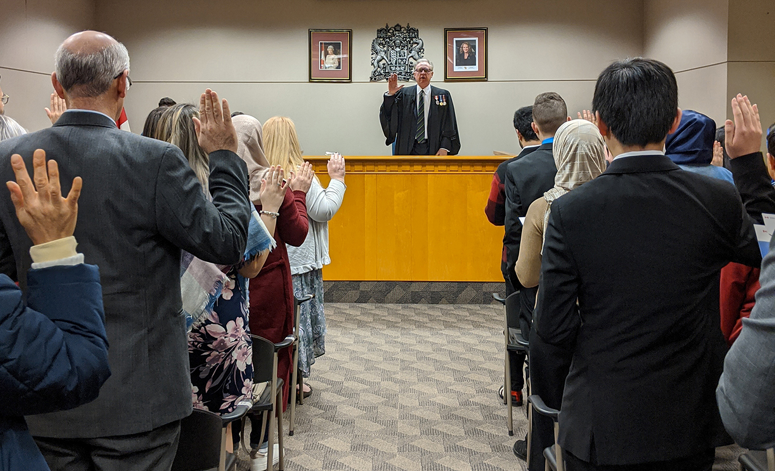 Fifty nine people became citizens of Canad in a ceremony earlier this year when Citizenship Judge Ron Foxcroft presided. It is an emotional moment for all the participants. Foxcroft said he was a “little nervous” but once he got into the procedure he said he was “fine”.
Working from a document provided by the federal government Foxcroft said:
“In a few minutes you will be sworn in as Canadian Citizens. You will swear or affirm your Oath to the Queen, which means you are swearing allegiance to Canada in her name and in her person.
“This is a proud moment for all of you. It is a memory you and your family will always cherish.”
Foxcroft then turns to the land acknowledgement that is now a part of almost every political event that takes place.
“I would like to acknowledge that this citizenship ceremony is taking place on the traditional territory of the Mississaugas of the New Credit and the the Haudenosaunee Nations.
“It is essential that all Canadians move forward together on the road to reconciliation, so that we can leave a proper legacy for future generations.
“Candidates for citizenship, I am happy that you have chosen to become citizens of this wonderful country, and it is a privilege for me to be here with you today. You are following in the footsteps of generations of great Canadians before you.
“Our first Prime, Sir John A. MacDonald, came here as an immigrant from Scotland with his family when he was five years old. They settled in Loyalist country beside Lake Ontario. He worked hard all his life and earned the everlasting gratitude of the Canadian people.
“My personal story is one of great gratitude to Canada for all that my country has given me. My family enjoyed all that this country has to offer. I was educated in Ontario, became a National Basketball Association referee, bought a trucking company and formed a business that exports to more than 100 countries around the world.
“I was honoured to be made the Honorary Colonel of the Argyle and Sutherland Highlanders, a renowned Armed Forces unit that fought in Europe in both world wars. That Regiment is based here in Hamilton.
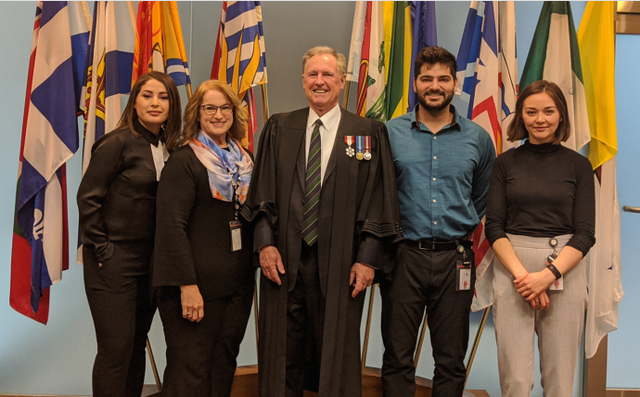 Four of Canada’s newest citizens “Many of you have travelled far and some have struggled to make a new home in Canada. Your decision meant adapting to a new culture, a new climate, and for most of you a new language.
“You are joining the Canadian story, one that you are now quite familiar with after studying Discover Canada and passing your citizenship test.
“You have learned about Canadian symbols like the Crown, the flag, the coat of arms and our motto, From “Sea to Sea”.
 The presentation of a Citizenship certificate “Being a Canadian citizen means a lot more than simply having a piece of paper. It means sharing a common set of Canadian values; having rights and responsibilities, such as being a full member of the Canadian family and the responsibility to obey Canadian laws.
“As a Canadian citizen, you live in a democratic country where individual rights and freedoms are respected.
“Thousands of brave Canadians have fought and died foe these rights and freedoms. The commitment to Canada of our men and women in uniform should never be forgotten or go unrecognized. We thank them.
“As a Canadian you have the right to vote and to run as a candidate in municipal, provincial and federal elections. It is your responsibility to find out about the issues in each election, to make your choice and to cast your vote.
“You are free to live and work in any province or territory. Take responsibility for yourself and your family. Get involved in our community by becoming a volunteer. These are responsibilities and privileges we all share and must act upon.
“The future of Canada, our freedom, our democracy, our peaceful society, equality under the law and our prosperity, depends on all of us together.
“You area about to take the Oath of Citizenship. As you pronounce the words of the oath, take then to heart; they are your commitment to do your best for Canada.
“Please repeat after me:
I swear
That I will be faithful
And bear true allegiance
To Her Majesty Queen Elizabeth the Second
Queen of Canada
Her Heirs and Successors
And that I will faithfully observe
The laws of Canada
And fulfill my duties
As a Canadian citizen
At this point Ron Foxcroft would have stood tall, beamed a great big smile upon the 59 people in the room and said:
“Congratulations, you are now Canadian citizens.”
And then lead them in the singing O Canada

 By Nicki St George By Nicki St George
June 26th, 2020
BURLINGTON, ON
Nicki St George was one of two parents who wrote regularly during those months that children were out of school and parents learned just what it is that a teacher does – they were now struggling to get it right. St George, who is a teacher, a recovering cancer patient and a mother working on an MEd. She sums up what the pandemic experience has been for her and her two children and a husband who finally had a glimpse into what spending three consecutive months with the kids all day long is like.
I took a hiatus from writing about my COVID life for two reasons. Firstly, the doldrums were setting in and I felt like I had very little new to share. But mainly, it took me a while to absorb and process the horrors occurring in the US, and the world around race relations. I was busy, minding my own business and considering my feelings about school being cancelled for the rest of the year when the news of George Floyd and Christian Cooper broke, and the riots started. I did not feel, as a middle-aged, middle-class, white, suburban mum (no, I am not a KAREN!), that I should take up any space on social media with trivial complaints about watching a 6-year old type a sentence on the keypad or the frustrations of having to homeschool for the remainder of the school year.
 I still feel uncomfortable about sharing how I personally addressed the issues of anti-racism with my family, mostly because I am embarrassed that I did so little to engage in this work before, but also because talking about the things I have done to address these issues feels like I am patting myself on the back. This self-gratitude, in my opinion, can become a fine line between bragging vs publicly sharing my thoughts and actions with others so as it can provide some perspective. With that said, here are the things that I am doing to help put a stop to systemic racism: I still feel uncomfortable about sharing how I personally addressed the issues of anti-racism with my family, mostly because I am embarrassed that I did so little to engage in this work before, but also because talking about the things I have done to address these issues feels like I am patting myself on the back. This self-gratitude, in my opinion, can become a fine line between bragging vs publicly sharing my thoughts and actions with others so as it can provide some perspective. With that said, here are the things that I am doing to help put a stop to systemic racism:
• engaging in conversations about race and how racism exists in Canada (and Burlington) at every opportunity with friends, family (including my children) and colleagues,
• following anti-racism activists on Instagram,
• taking my family to BLM protests (when I feel that social distancing is being observed),
• adding a long list of fiction and non-fiction books by Black authors to my summer reading list so that I am better equipped to have conversations about white privilege and racism,
• addressing comments that show ignorance to the BLM movement,
• donating to charities committed to the anti-racist movement,
• seeking out and supporting retailers who are making a conscious effort to support Black owned businesses,
• not bragging about my efforts on social media.
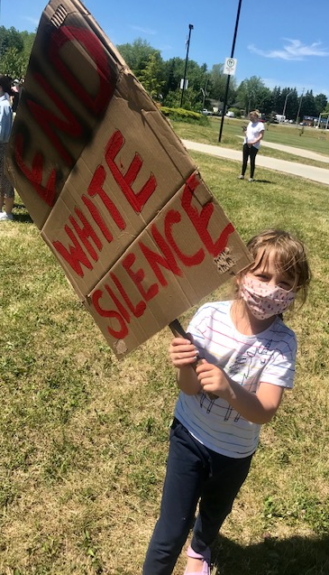 So, now that I have that off my chest, I can address what my column is supposed to be about – how to be a parent in the time of COVID (I think). So, now that I have that off my chest, I can address what my column is supposed to be about – how to be a parent in the time of COVID (I think).
Homeschooling
Doing 1-2 hours of work a day is no substitute for being in school. It was better when I wasn’t working full time, and things definitely started to slip towards the end. Leo started taking ownership for completing his own work, which sounds great, but he was taking short cuts everywhere. On the plus side, he started taking advantage of his English teacher’s drop in Google Meets. He also wore his signature sombrero for every virtual class (which made me smile).
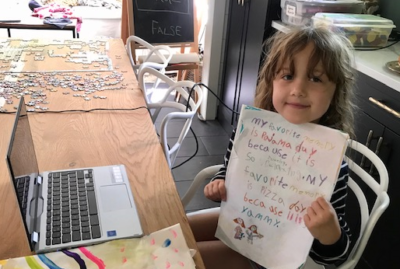 Bea started having Google Meets with her class. Her teacher is amazing! I marvel at how she maintains full control of a group of Grade 1 students while using video conferencing. I know a lot of parents who gave up on the homeschooling towards the end. Personally, I found it useful; it gave us a purpose and something to do. Bea started having Google Meets with her class. Her teacher is amazing! I marvel at how she maintains full control of a group of Grade 1 students while using video conferencing. I know a lot of parents who gave up on the homeschooling towards the end. Personally, I found it useful; it gave us a purpose and something to do.
Summer Plans
Summer is normally a tense time in my marriage. As a teacher with summers off, I struggle to fill the days with the kids. Meanwhile, I dare not complain because ‘I’m on holiday.’ But my ideal holiday does not include being camp leader to two whingy kids all summer long. A positive thing that has come out of the pandemic is that Dan has finally had a glimpse into what spending three consecutive months with the kids all day long is like and I think we are on the same page now.
Last year, I had a whole summer bucket list and we did pretty well – library once a week, public pools, museums, and play dates, etc. This year is really going to push my creativity (and resourcefulness) to the limit. And since my summer holiday officially starts tomorrow, I’ve only started giving thought to how this is going to work.
The COVID vibe is weird. Mostly it seems like life has gone back to normal, but hang on, aren’t we still recording 300 odd cases a day in Ontario? The COVID numbers have completely dropped off the news cycle so I think most people are either coming to terms with the possibility that they might catch COVID, or they are just sick of social distancing. I’m still reticent to take my kids into any stores or public places that aren’t essential, but we are venturing out to the drive-in and planning to share a cottage with another family. Three months of isolation with my family has proven to me that we can all survive the togetherness, and gosh darn it, I really like these three people that I’m stuck with (even Bea).
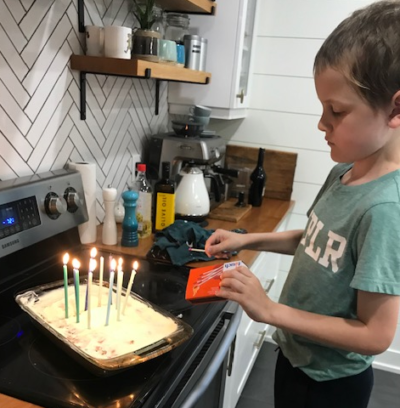 September September
Oh Lordy – this is going to be interesting. If regular citizens are acting cavalier about COVID, the Health Department and Ministry of Education sure aren’t. Parents and teachers are preparing for three possible scenarios which almost feels like kismet since last year teachers were fighting against eLearning and larger classes, and now we will likely see a compromise between these two issues. One thing is for sure, school is going to look very different for everyone. Teachers are going to be working hard over the summer to upskill and prepare for new delivery methods. My school is moving into a Hyflex Lyte model, which sounds fancy, but essentially will just enable us to move seamlessly from in-person to remote learning when the second wave inevitably hits. Plexi-glass, PPE, and sanitizing workstations every 75 minutes are inevitably in my future.
Nevertheless, I am looking forward to getting back into the classroom, whatever it may look like. And not just because it is a break from my kids; although, I may be taking them with me on odd days. And if we end up back at home…well, at least I’ve amassed an impressive amount of witty Zoom backgrounds to keep things light!
Related new stories:
Week 5
Week 6
Week 8
Week 9

|
|
 By Staff
By Staff


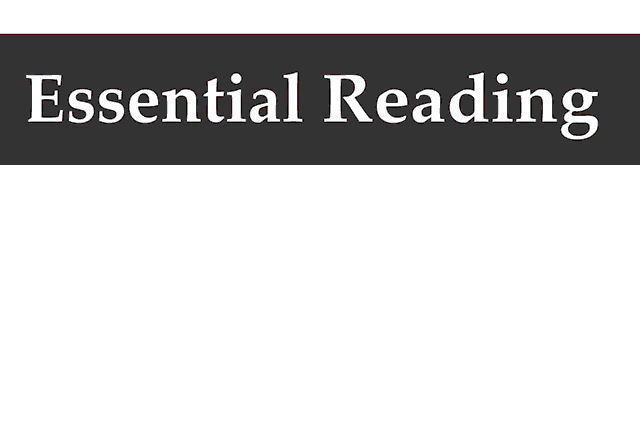
























 “Halton is committed to reducing West Nile virus in our communities through education and preventative programs such as larviciding,” said Dr. Hamidah Meghani, Halton Region Medical Officer of Health. “Until the hard frosts of fall set in, Halton residents should continue to protect themselves against mosquito bites and remove mosquito breeding sites.”
“Halton is committed to reducing West Nile virus in our communities through education and preventative programs such as larviciding,” said Dr. Hamidah Meghani, Halton Region Medical Officer of Health. “Until the hard frosts of fall set in, Halton residents should continue to protect themselves against mosquito bites and remove mosquito breeding sites.”
 What is a virtual visit and why would you want to do one?
What is a virtual visit and why would you want to do one? Parents are frustrated – they want information – but the school boards don’t have much in the way of information they can share.
Parents are frustrated – they want information – but the school boards don’t have much in the way of information they can share.


 Late in June ward 4 Councillor Shawna Stole took it upon herself to convince her council colleagues to implement a face mask by law.
Late in June ward 4 Councillor Shawna Stole took it upon herself to convince her council colleagues to implement a face mask by law.










 While returning to work is important to getting our economy working closer to its potential – the issue for many is – what happens in September when the kids are normally returning to school.
While returning to work is important to getting our economy working closer to its potential – the issue for many is – what happens in September when the kids are normally returning to school.
















 I still feel uncomfortable about sharing how I personally addressed the issues of anti-racism with my family, mostly because I am embarrassed that I did so little to engage in this work before, but also because talking about the things I have done to address these issues feels like I am patting myself on the back. This self-gratitude, in my opinion, can become a fine line between bragging vs publicly sharing my thoughts and actions with others so as it can provide some perspective. With that said, here are the things that I am doing to help put a stop to systemic racism:
I still feel uncomfortable about sharing how I personally addressed the issues of anti-racism with my family, mostly because I am embarrassed that I did so little to engage in this work before, but also because talking about the things I have done to address these issues feels like I am patting myself on the back. This self-gratitude, in my opinion, can become a fine line between bragging vs publicly sharing my thoughts and actions with others so as it can provide some perspective. With that said, here are the things that I am doing to help put a stop to systemic racism: So, now that I have that off my chest, I can address what my column is supposed to be about – how to be a parent in the time of COVID (I think).
So, now that I have that off my chest, I can address what my column is supposed to be about – how to be a parent in the time of COVID (I think). Bea started having Google Meets with her class. Her teacher is amazing! I marvel at how she maintains full control of a group of Grade 1 students while using video conferencing. I know a lot of parents who gave up on the homeschooling towards the end. Personally, I found it useful; it gave us a purpose and something to do.
Bea started having Google Meets with her class. Her teacher is amazing! I marvel at how she maintains full control of a group of Grade 1 students while using video conferencing. I know a lot of parents who gave up on the homeschooling towards the end. Personally, I found it useful; it gave us a purpose and something to do. September
September